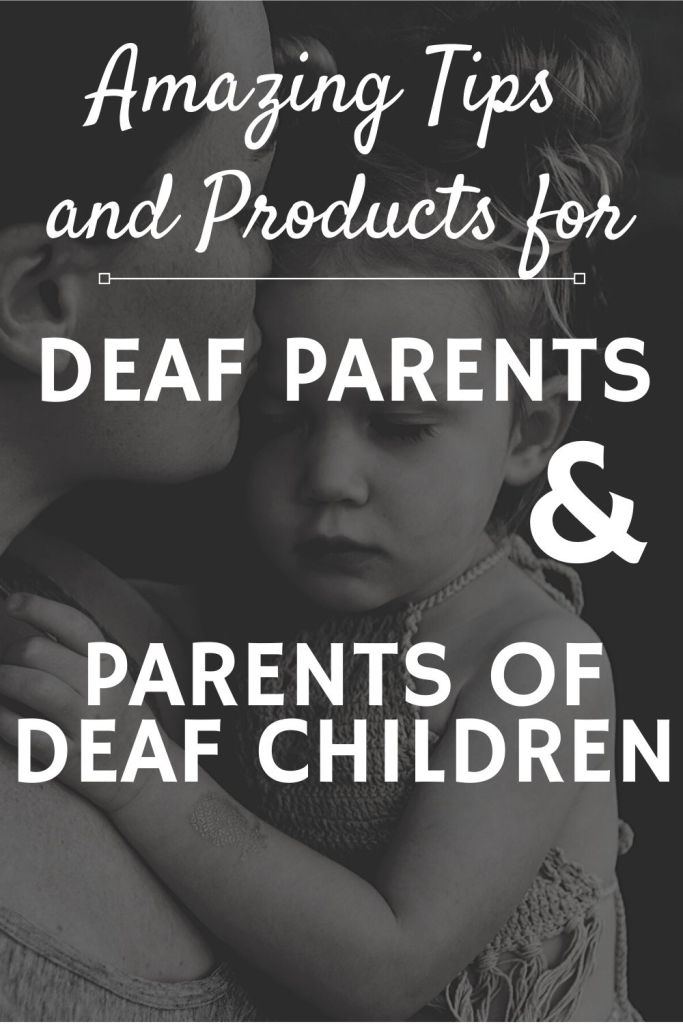
Disclosure: “You’ve Got This, Mom!” participates in the Amazon Services LLC Associates Program, an affiliate advertising program providing a means for sites to earn advertising fees by linking to Amazon.com. Most product links lead directly to Amazon.com.
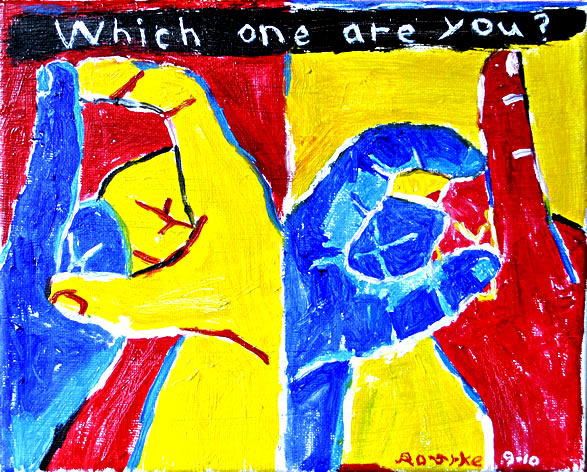
**First and foremost, to clear the air of any confusion, you will see me use the terms “deaf” and “Deaf” throughout this post. These are terms used within the Deaf community. Little-d “deaf” refers to anyone who is legally deaf, while big-D “Deaf” refers to anyone who uses American Sign Language (ASL) as their main form of communication. You do not have to be deaf to be Deaf; hard-of-hearing (HOH) people, children of Deaf adults who use ASL at home, and others can be part of the Deaf community.**
I am a hearing parent of a hearing child, but I have been infatuated with and connected to the Deaf community since I was very young. I fell in love with ASL at just 6 years old and, teaching myself, became fluent in the language by high school. This opened doors for me in college to become friends with Deaf students; friendships I still have today!
One of my friends, Becky, whom I’ve only known for a few years, is a Deaf mother of a hearing child. Becky and I share a passion for bridging the gap between Deaf/deaf and hearing, and to provide information to Deaf/deaf people to help make life in a hearing world easier! Although her child is grown now, Becky and I have recently been discussing what current products are available to new deaf parents and/or hearing parents of deaf babies.
My curiosity got the better of me, and I started researching. I learned that, even though those products are out there, there is not a lot of information available to parents about what is out there and what are the best products.
**Because there are very few easy-to-find resources on this topic, I compiled the best I could find on a Pinterest board. Please be sure to follow it to keep up with new information on the subject!**
Tips for CODA Parents
“CODA” or “KODA” are slang terms in the Deaf community that stand for “Child/Kid of a Deaf Adult.” CODAs can be either hearing or deaf, but 90% of the time a child of a deaf adult is hearing.
A popular question among hearing parents is “How do deaf parents hear their children cry?” Well, obviously they can’t “hear” their children cry in the usual sense of the word, but deaf parents are more than capable of taking care of a child in the same capacity as a hearing parent.
Deaf parents rely on their other senses to understand the needs of their child; they see that a child is crying, feel their temperature, etc.
Fortunately, there are some fantastic products out there that capitalize on these senses for when a deaf parent is not in the room with their child — because these parents need peace of mind to sleep as well!

👉🏻👉🏻You may also be interested in: Establishing a Newborn Sleep Schedule 👈🏻👈🏻
Alert for When Your Baby Cries
There are actually a lot of options that can provide deaf parents with the ability to know if their little one needs them from the other side of the house including digital and vibrating monitors, apps, and even special dogs who have been trained to alert you of your baby crying.
Baby Monitors
Here is a review of the 5 best baby monitors of 2020 according to Vera Baby Spot.
Our absolute favorite, which came in second on their list, is the Summer Infant Babble Band Wearable Audio Monitor. Unfortunately, after much searching, it looks like this product is no longer manufactured, so a great alternative is the SereneLife Wireless Baby Monitor and Smart Watch. You wear the parent unit just like an Apple Watch and get an alert through vibration when your child cries.
Apps
Thank God for technology; I don’t think I have ever said that until I had a baby! The conveniences that technology gives us as parents (digital baby monitors, googling parenting questions, etc.) is just amazing. Cloud Baby has created an app that lets you monitor your child through your iPhone, Android, iPad, Apple Watch, Mac, or Apple TV. You have to have at least two of these devices for this to work. For instance, you would place an iPad, Mac, or Apple TV in your child’s room and you would be notified through whichever other device you are using as a parent unit.
The app itself is $3.99, and if you already have these devices, then you’re spending less than $4 on a high quality baby monitor. When we were researching this product, we were amazed to see an average of 4.8/5 stars from 12.9K ratings on the Apple app store ratings (which is almost unheard of for any app or baby monitor). Just check out this user’s review!
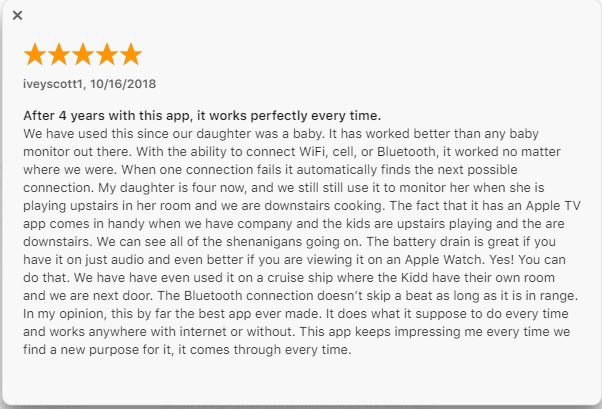
When your baby moves or makes a noise, you will get a notification. Deaf parents can set their phones to vibrate or vibrate and flash (if you have that option on your phone) and can be woken from their sleep with the alert.
👉🏻👉🏻 20 Newborn Must-Haves in 2020 👈🏻👈🏻
Trained Hearing Dogs

deaf_parenting_children_service_dog.jpg
Did you know there are dogs that are trained to alert you when your baby is crying? Mommy Gone Tropical explains: “Deaf parents still have the ability to obtain a hearing dog to assist with alerting them to the baby’s crying. However, the hearing dogs are expensive. There is a wide range of hearing dog costs from $0 (donation-based) to more than $30k, so it is not always the ideal option you would utilize. Some deaf parents get lucky with their regular dog taking on that responsibility naturally while other dogs are simply lazy just like mine.”
Paws with a Cause specifically trains dogs for this purpose (as well as alerting you for smoke alarms, door bells, phone calls, etc. We thought it was absolutely precious that their motto is “You Listen For Me.” Even though this is expensive, it is still our favorite option; how much better would it be to be woken up by your sweet fur-baby than by a vibrating or super bright monitor?
Car Safety
Driving with a child in a rear-facing seat can be stressful for any new parent because you can’t see what they are doing. A great idea for seeing your child while driving is installing a mirror. However, many baby mirrors for the car are not crash-tested and could cause major injury to you or your child in a crash. If you are going to buy a mirror for your car, make sure it has been crash-tested by manufacturers.
The BRICA Crusin’ In-Sight Baby Car Mirror is a great choice because not only will you be able to keep an eye on your little one, but the mirror will keep him entertained during the trip with fun lights and music. We love how well this mirror is strapped on to the seat; there’s no way it’s coming off!
If you’re looking for a cheaper and simpler option, BRICA also makes a crash-tested mirror that has no extra bells and whistles; it’s just a mirror. The Munchkin BRICA Baby In-Sight Car Mirror has the same straps as its flashy counterpart to safely keep it in place.
Tips for Parents of Deaf Children
As a hearing parent with no ties to the Deaf community, finding out that your child is deaf is world-changing! There are so many decisions you have to make — hearing aid vs. cochlear implant vs. no device, Deaf school vs. mainstream school, speech vs. sign language, etc. Although those decisions can be put on the back burner for a while, preparing your home — and your parenting — for a deaf child is something you have to be able to jump right into! These products and tips should help with the transition.
Alternative Soothing Methods
One reason I began wondering about what products were available for deaf parents or parents of deaf children was because my 4-month-old son cannot get to sleep without me singing to him. This, of course, peaked my curiosity about how deaf babies can be soothed to sleep.
Probably not as a newborn, but once your baby starts becoming more aware of his surroundings he may become very uncomfortable in a pitch-black room. Being completely deprived of all of your senses at once can be very disturbing to anyone (think about being in a completely black, completely silent room by yourself). Also, depending on what caused your child’s deafness, he may feel very dizzy and disoriented in a dark room.
To help your child with this, you could buy a night light, a light mobile, or good old-fashioned glow-in-the-dark star stickers.
Bedtime Routine
It’s also important to have a very strict bedtime routine. If your little one is having trouble being soothed at bedtime, he needs a routine that calms him but also helps him know what is coming next. Giving him a warm bath, changing him into pajamas, and rocking him will help calm him down before bed and may even get him to sleep before you put him in the crib.
👉🏻👉🏻Related: Establishing a Newborn Sleep Schedule 👈🏻👈🏻
👉🏻👉🏻Also: Two-Month-Old Sleep Schedule & Napping Tips👈🏻👈🏻
Developmental Toys
Fortunately, you probably already have a lot of toys at home that will help your deaf child with development. While the noises that a toy makes will probably make no difference to your child, other things about their toys will appeal to them. Look for toys with bright lights and colors, different textures, and rattling or vibrating toys. If you have a toy that makes sound, put your hand on the speaker and see if the sound makes a vibration. Your little one will love to practice using his sense of touch and sight!
Here are some of our favorites!
👉🏻👉🏻 Related: 20 Newborn Must-Haves in 2020 👈🏻👈🏻
Language Development
Even if you don’t want (or haven’t decided on) your baby becoming fluent in ASL, using baby signs as soon as possible is very important to your little’s language development.
Baby signs are beneficial to both deaf and hearing children. Studies show that babies whose parents have used baby sign language with them from infancy start to communicate months earlier with their parents (manually) than their peers who are just getting verbal communication.
Whether or not you care about early development of language skills, all babies have to have some form of communication from very early or they will have learning and communication issues later in life.
We love this image from Can Do Kiddo about the benefits of baby sign in her blog post “Why, When, and How to Start Baby Sign Language.”
It is recommended to start using baby signs with your child as early as 6 months. This is when she will start understanding that signs have meaning. She may start communicating back with you immediately, but most babies don’t start using the signs on their own until 8 months.

And if you do decide that you want your child’s main form of communication to be speech, don’t worry! “A common concern regarding baby sign language is that this method of communication will take the place of verbal language for your baby. However, Aylet says that sign language will actually accelerate your baby’s verbal skills: ‘If your little one is growing up in a house and community full of people who use speech as their primary means to communicate, then when your baby or toddler can speak, he/she will’ (Can Do Kiddo).
Make sure when you’re communicating with your baby that you make eye contact and express yourself through movement. Your little one needs to understand that something different is happening rather than just the routine movements of day-to-day life.
Expressing Your Feelings
Even though your baby can’t hear you with her ears, she can still “hear” you by seeing your expressions. When you’re happy, smile big and move about joyfully. When you want her to know how much you love her, cuddle her and tickle her toes. Be aware of how you talk to her so that she knows what you are feeling. Even if babies have no idea what you’re saying, they pick up on emotions pretty quickly. Before you know it, your big, happy grin will bring a precious smile to your little one’s face!
Other Resources
Check out my fellow mommy blogger’s, Donna Stephen of More Than A Mommy Blog post about her experience with hearing loss in a child and her interview with ASL teacher, Megan Stokes.
Have you used any of these products before? What other tips and tricks do you have to share? I would love to hear from you! Comment below!
You’ve got this, Mom!!!

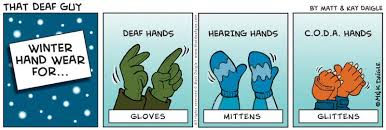

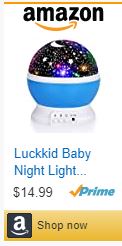



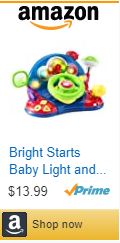

Such good information!
LikeLike
Thanks so much for reading!
LikeLike